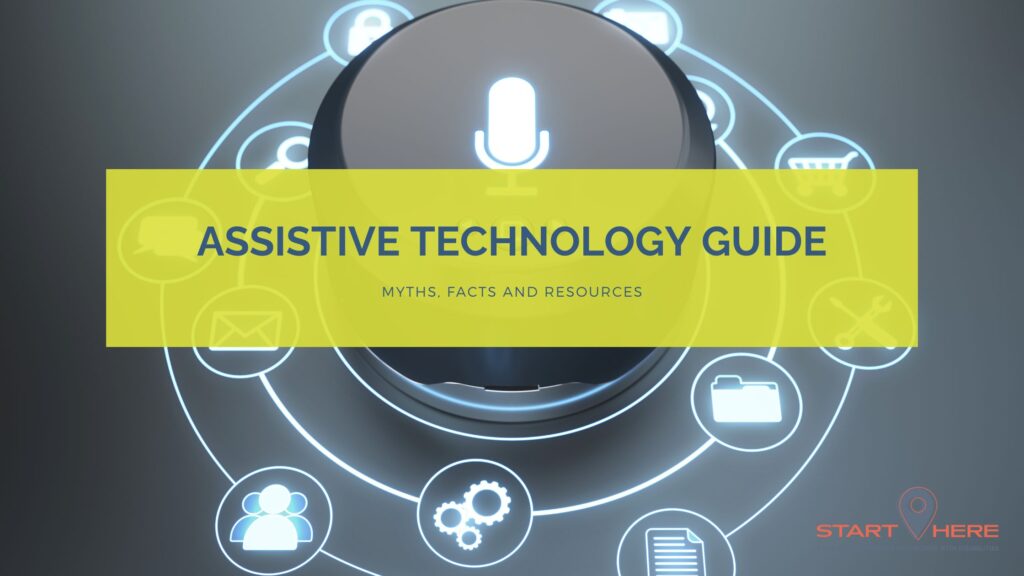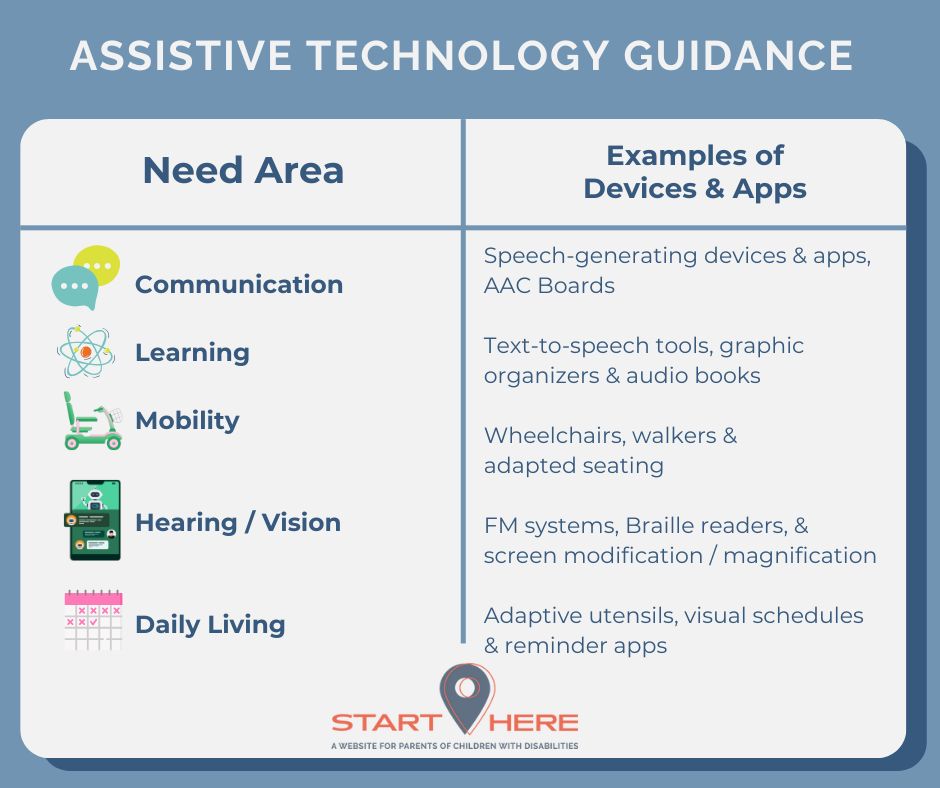
Navigating the world of assistive technology (AT) can feel overwhelming, but you’re not alone. Whether your child is just starting to explore tools that support learning, communication, mobility, or daily living, or you’re further along in your journey, understanding what’s out there (and what’s not true!) is a crucial first step.
In this guide, we’ll bust some common myths, clarify what assistive technology really means, and share resources to help you make informed choices for your child’s needs.
MYTHS & FACTS ABOUT ASSISTIVE TECHNOLOGY
Myth #1: Assistive technology is only for children with severe disabilities.
Fact: AT can benefit children with a wide range of disabilities, including learning disabilities, ADHD, speech delays, and more. Tools can be as simple as a pencil grip or as advanced as a speech-generating device.
Myth #2: AT is just about fancy gadgets.
Fact: Assistive technology includes both devices (like tablets or hearing aids) and services (like training and evaluations to use those devices). It’s a team effort where professionals work with families and schools to find the right fit.
Myth #3: If my child uses AT, they’ll become too dependent on it.
Fact: The goal of AT is to increase independence, not reduce it. The right technology can open access to education, communication, and play.
Myth #4: AT must be expensive.
Fact: Many tools are free or low-cost, and several programs exist to help cover expenses (we’ll list those below!).
WHAT COUNTS AS ASSISTIVE TECHNOLOGY?
Assistive Technology is any item, piece of equipment, or product system—whether purchased off the shelf, modified, or customized—that is used to increase, maintain, or improve the functional capabilities of a child with a disability.
Here’s a quick overview of categories and examples:

FUNDING ASSISTIVE TECHNOLOGY
AT can be affordable—and sometimes even free—if you know where to look. Some funding sources include:
- Medicaid and private insurance
- State AT Programs (device lending libraries or try-before-you-buy programs)
- Local school districts
- Vocational Rehabilitation Programs
- Grants and nonprofits (e.g., UnitedHealthcare Children’s Foundation, The ARC, Children’s Assistive Technology Service)
APPS AND DIGITAL TOOLS TO EXPLORE
There are thousands of apps on the market, but here are a few to get started:
- Proloquo2Go – communication
- Speech Blubs – speech development
- Choiceworks – visual scheduling
- Seeing AI – for low vision users
- ModMath – accessible math for kids with dysgraphia
Want more? We’ve compiled a regularly updated list of new apps and devices for parents on our “What’s New” page.
OTHER RESOURCES FOR PARENTS
- Center on Technology and Disability: https://ctdinstitute.org
- Family Center on Technology and Disability (FCTD)
- Assistive Technology Industry Association (ATIA): www.atia.org
- National Center on Accessible Educational Materials (AEM Center): https://aem.cast.org
Is this highlight not enough information? Do a deep dive on AT here.

YOU’RE NOT ALONE
Assistive technology is a powerful way to support your child’s potential—and the more informed you are, the better decisions you can make together. Explore your options, connect with your child’s school, and lean into your community.
Don’t forget to check back regularly on our “What’s New” page—we keep it updated with the latest devices, apps, and family-friendly tools!
